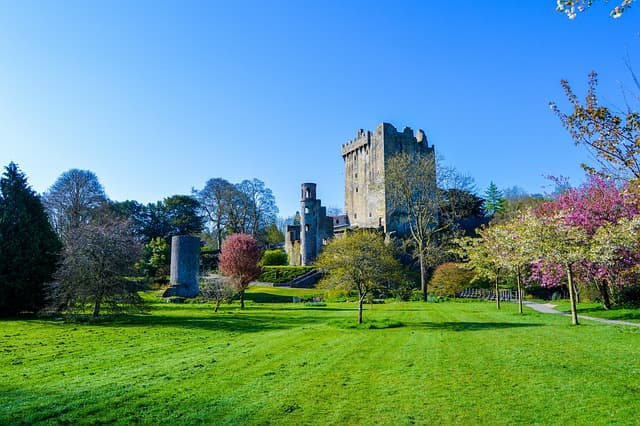
One of the Irish rulers was expelled from his possessions by the High King Roderick and went to England to seek support from King Henry II of England. The English monarch first sent his barons to conquer Ireland, then came to the island himself.
The English, or rather Norman, conquest of Ireland relied on the papal bull, so the Irish clergy immediately submitted. Soon the supreme king had to surrender as well. He signed a treaty that placed the eastern part of the island under the rule of the English crown, and the Irish king himself became a vassal and tributary.
The English conquest had a significant impact on the history of Ireland, especially the eastern part. The conquerors drove out the local rulers, took their lands, imposed their own laws, and established their own system of government. The subjugated lands were called the pale, the outskirts. The rest of the island was known as Wild Ireland, and the English always tried to conquer it as well.
The Irish attempted to recapture their country by seeking help from King Robert the Bruce of Scotland, who defended Scottish independence. But it was not possible to defeat the conquerors even with Scottish help.
The English conquest was stopped by the plague that attacked the island in the middle of the 14th century. The disease was rampant mainly in Irish towns, inhabited mainly by Englishmen. The Irish themselves lived in the countryside. Almost all of the conquerors died of the plague, after which English power began to spread over a limited area as far as Dublin.
England’s lost influence began to be restored by the first king of the Tudor dynasty, Henry VII. His proposed Poining Act made Ireland even more dependent on the English: for example, the Irish parliament could not make decisions without the approval of the English government.
England still controlled only part of the island. The next king, Henry VIII, put down a local rebellion organized by the aristocrat Thomas Fitzgerald, conquered all of Ireland and proclaimed it a kingdom, and became king himself.
The same English king began the English Reformation, as a result of which the English became Protestant. Ireland, on the other hand, remained Catholic, resulting in a major split between the two islands.
Queen Elizabeth forcibly instituted the Reformation in Ireland, took wealth away from Catholics, and installed a new clergy. The Irish revolted and numerous rebellions began. One of the most serious was the Gug O’Neill Rebellion, but it was suppressed. Ireland remained English, but many locals were destroyed or displaced.
Cromwell’s conquest and oppression of the Irish
In the mid-17th century, Britain experienced the English Revolution, during which the British loosened their control over Ireland. The Irish took advantage of this, revolted against the Protestants, and created Confederate Ireland.
The new state lasted only a few years until Oliver Cromwell, the leading figure of the English Revolution, arrived on the island. He brought an army with him, seized two towns near Dublin, murdered the garrisons and all the Catholic priests, and then gradually conquered the whole island.
Cromwell was going to restore tranquility to Ireland by driving out all the Catholics. Many Irishmen were exterminated, others fled the country. When Britain overthrew Cromwell and restored royal authority, it had no effect on the situation in Ireland, which continued to deteriorate. The English oppressed the Catholic Irish, taking their land holdings, issuing cruel laws, and banning Irish music, traditions, and education. Irish culture survived only through secret assemblies and hidden schools.